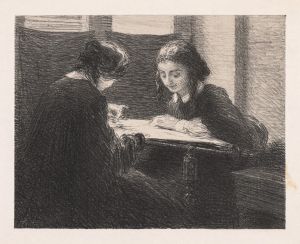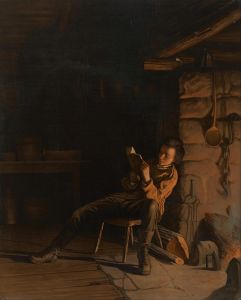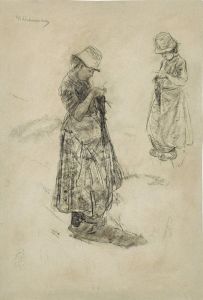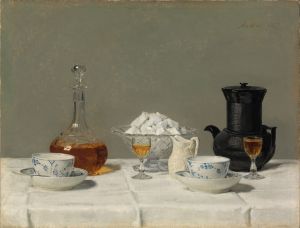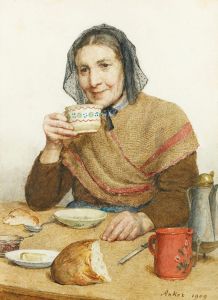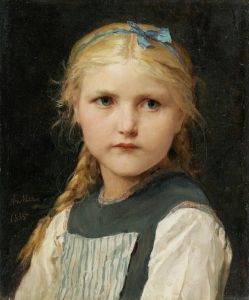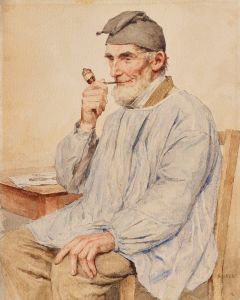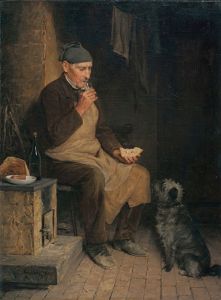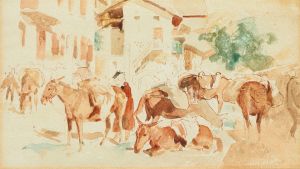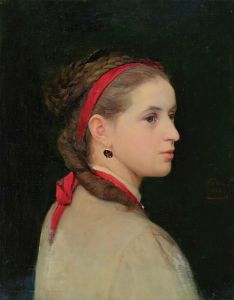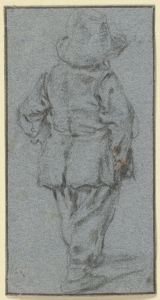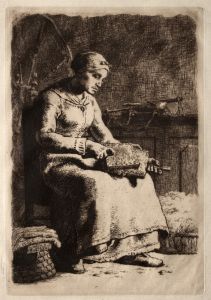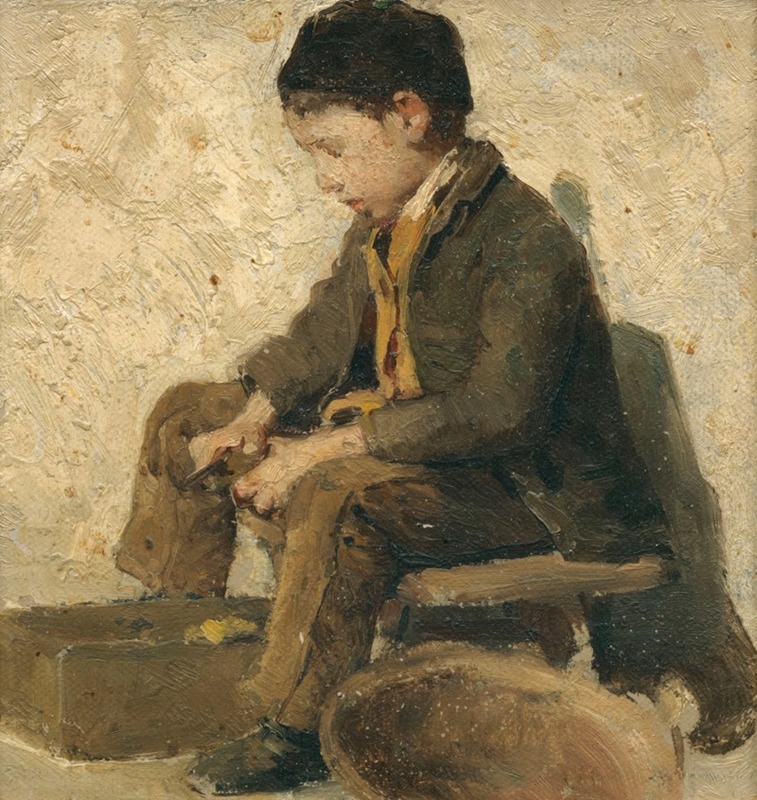
Sitting Boy Peeling Vegetables
A hand-painted replica of Albert Anker’s masterpiece Sitting Boy Peeling Vegetables, meticulously crafted by professional artists to capture the true essence of the original. Each piece is created with museum-quality canvas and rare mineral pigments, carefully painted by experienced artists with delicate brushstrokes and rich, layered colors to perfectly recreate the texture of the original artwork. Unlike machine-printed reproductions, this hand-painted version brings the painting to life, infused with the artist’s emotions and skill in every stroke. Whether for personal collection or home decoration, it instantly elevates the artistic atmosphere of any space.
Albert Anker's painting Sitting Boy Peeling Vegetables is a notable example of the Swiss artist's dedication to capturing scenes of everyday life with meticulous detail and emotional warmth. Anker, often referred to as the "national painter" of Switzerland, was renowned for his genre paintings that depicted rural and domestic life, often focusing on children, families, and simple, humble activities.
Created in 1895, Sitting Boy Peeling Vegetables portrays a young boy seated at a table, engrossed in the task of peeling vegetables. The composition is intimate and unpretentious, emphasizing the boy's concentration and the quiet simplicity of the moment. The setting is modest, with a wooden table and a plain background that directs the viewer's attention to the boy and his activity. The painting exemplifies Anker's ability to elevate ordinary, everyday tasks into subjects of artistic beauty and cultural significance.
Anker's work is characterized by its realism and attention to detail, and this painting is no exception. The boy's posture, the texture of the vegetables, and the natural lighting all contribute to the lifelike quality of the scene. Anker's use of warm, earthy tones enhances the sense of homeliness and tranquility. His focus on children as subjects reflects his interest in themes of innocence, education, and the rhythms of rural life.
The painting is also a reflection of the 19th-century Swiss rural environment, where such domestic tasks were a common part of daily life. Anker's art often served as a visual documentation of the cultural and social practices of his time, preserving the traditions and values of Swiss society during a period of modernization and change.
Albert Anker (1831–1910) was a highly respected figure in Swiss art, and his works continue to be celebrated for their technical excellence and humanistic themes. His paintings are housed in various museums and private collections, with many of his works, including Sitting Boy Peeling Vegetables, being considered cultural treasures in Switzerland.
The painting is currently part of the collection of the Kunstmuseum Bern in Switzerland, where it is displayed alongside other works by Anker. The museum's collection highlights Anker's significant contribution to Swiss art and his enduring legacy as a painter who captured the essence of everyday life with compassion and skill.





